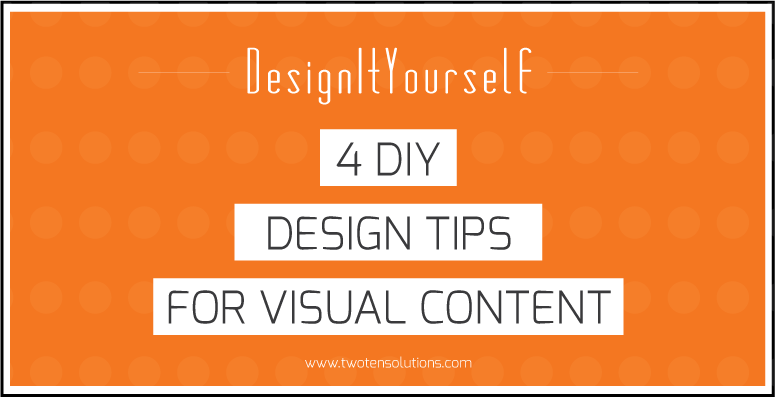Are you ready to start taking charge of your own visual content?
Even if you think you’re ‘visually challenged’ you CAN create imagery that supports your brand and message.
1. Keep your designs simple
The main trap that DIY designers often fall into is trying to cram too much into their design. Squeezing every colour combination, font choice, photograph, texture, shadow and effect into a single design is really not going to help to clarify your marketing message.
In design circles we talk a lot about “white space”, and understanding how to use it is key to keeping your design looking neat. Don’t take the term too literally, “white space” can be any colour, but the idea is that you give plenty of room to your design elements. Let them breathe.
A crowded design is not only messy, but is ultimately redundant, as your marketing message will be lost and muddied.
2. Look around with a critical eye
Design isn’t a dark-art that only a few select and kooky types are born with. As with any skill, it does come easier to some more than others, but with commitment and practice, it also can be learned.
Ideas don’t just appear out of nowhere. They have to be cultivated, and the best way of doing this is by looking at what others have done already. Start bookmarking websites that you like the look of, and when you’ve got some time browse through them and think about what it is you like. Collect fliers and business cards. Have a folder somewhere of stuff you come across that you like, or find interesting. When you sit down to do your own project, look through this inspiration pot of others’ visual content, for some ideas to get you started.
3. Use fonts wisely
It can be easy to get carried away with using lots of different fonts, but resist that urge.
Use a safe, traditional font for the body copy of your project – Helvetica, Tahoma or Verdana. These ‘boring’ fonts have been designed for readability, so let them do their job.
To inject some creativity into your design, save the fun font for your headings, as well as any highlight or call-to-action text. To get extra variety, mix up the different font weights of a single font family. Most professional fonts come with different weight and italics options, and it’s using this mix that will help your design to come together. Also experiment with CAPS and varying font sizes.
4. Use your own photos
The quality of image file that your smartphone produces is easily good enough for use as a blog image. Experiment with filters and apps on your phone to beef up the visual style of the photos you take. Not sure where to start? Here are some tips on creating your own smartphone images.
Be consistent with how you create your visual content, and you’ll find that you’ve generated a recognisable visual theme around your brand. This is going to make you stand out above everyone else who is using the same old recycled free and cheap stock images.


